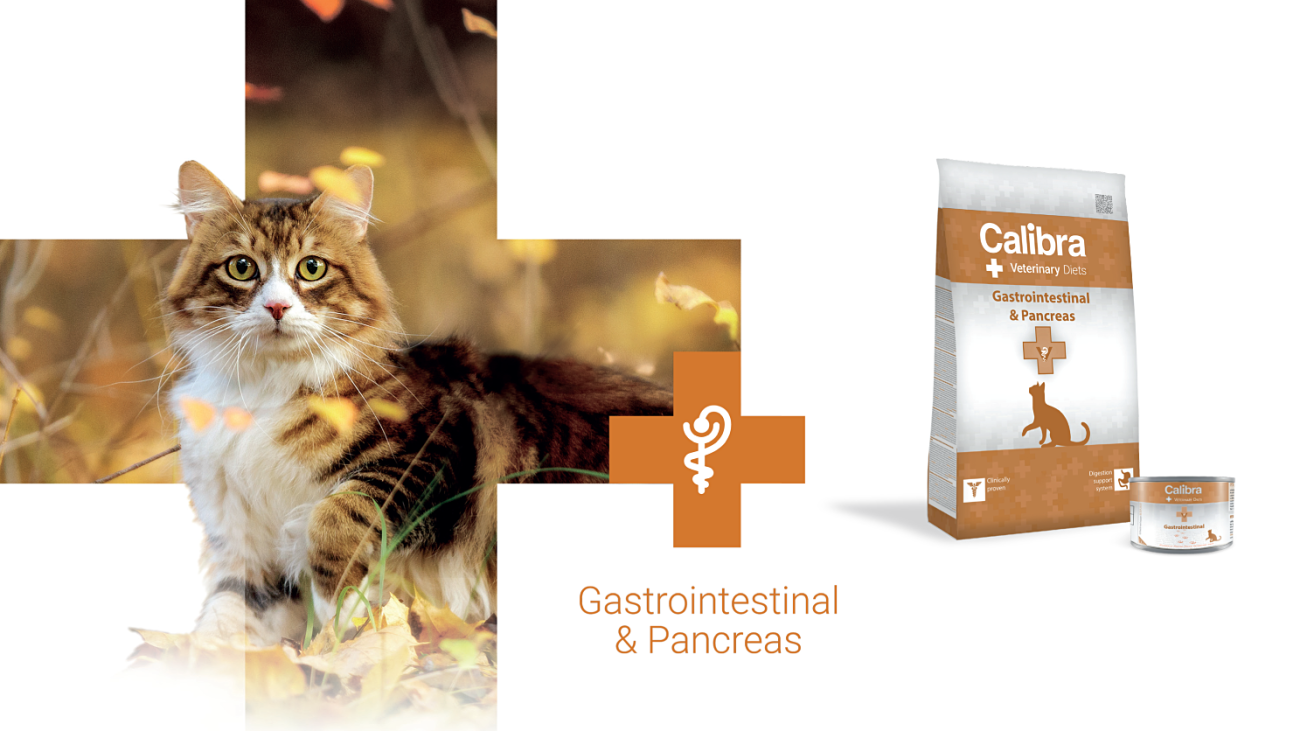Calibra VD Cat Gastrointestinal & Pancreas for cats
8. February, 2022
The cat's digestive problems are one of the most common reasons for visiting a
veterinarian, who often recommends starting a veterinary diet as part of
treatment. Are you interested in how a change in diet can help and how is the
Calibra diet different from conventional food? Let's take a look at the complex
issues of digestion together.
In this article you will read:
- how the cat's digestive system works
- what are the most common causes and manifestations of gastrointestinal diseases
- what is a microbiome and why it is important
- why it is appropriate to start a veterinary diet
- when and how the Calibra gastrointestinal diet helps
How does the digestive system work?
Cats are carnivores. Predators and hunters by nature, they are adapted to a diet based on meat – animal protein. Their digestive system and metabolism are adapted to this lifestyle. They need a low-carbohydrate diet to function properly. Cats can make their own glucose (blood sugar) in the liver from amino acids that come from protein.
The processing of food begins in the oral cavity, where preparation for digestion takes place. Food then moves through the gullet towards the stomach, where the process of digesting proteins begins. This process is enabled by the anatomy of the stomach and the presence of stomach acids, which activate enzymes that digest proteins.
The digested food then moves from the stomach to the small intestine. The small intestine is the central organ for breaking down macronutrients (fats, proteins, sugars) into simpler components capable of permeating cells. They are then used in the cells as a source of energy or as building materials (such as muscles).
The pancreas produces enzymes necessary for breaking down macronutrients and releases them into the small intestine. Thanks to this, the small intestine can digest proteins, as well as fats and sugars.
The large intestine is where the final absorption of water and minerals takes place. The contents of the large intestine then thicken and form into stools.
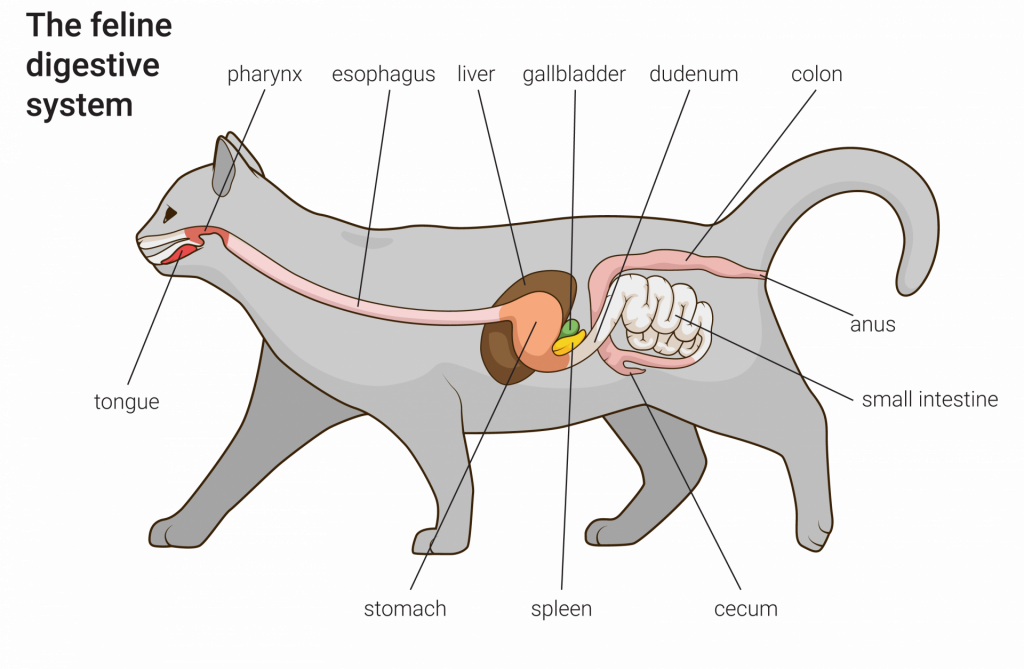
Digestive disorders / digestive tract illnesses
Digestive disorders are a very common reason for a visit to the veterinarian, whether it’s an acute problem (lasting a few hours/days) or a chronic condition (lasting for weeks).
Based on the symptoms that your cat presents, the location of the problem can often be determined:
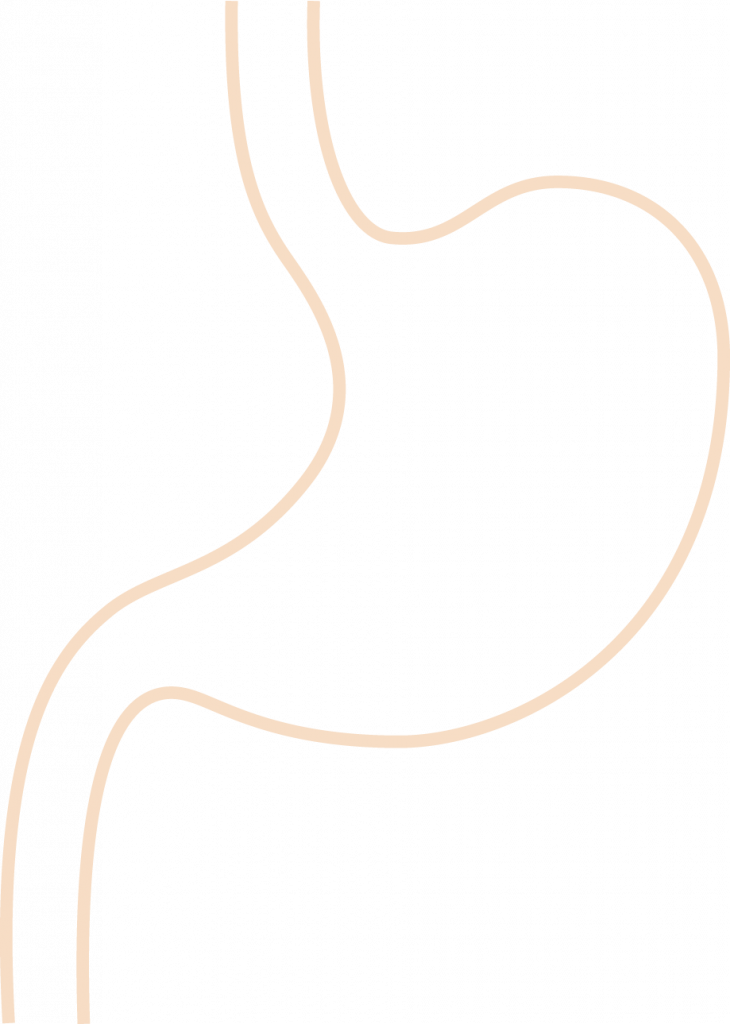 Swallowing difficulties and lack of appetite are usually associated with problems in the oral cavity (for example, cats like to play with balls of yarn or spools of thread, which can have a needle in them that can easily get stuck in the tongue).
Swallowing difficulties and lack of appetite are usually associated with problems in the oral cavity (for example, cats like to play with balls of yarn or spools of thread, which can have a needle in them that can easily get stuck in the tongue).- Vomiting is usually associated with stomach inflammation (gastroenteritis), infection, ingestion of a foreign object, or poisoning (intoxication).
- Diarrhea/constipation is associated with intestinal problems.
Diarrhea or vomiting leads to reduced intake and absorption of basic nutrients, resulting in metabolic decline. With illnesses affecting the digestive system, it is therefore very important
to get a diagnosis quickly and to begin treatment, as well as to choose an appropriate and balanced diet. The diet must be highly palatable for the sick cat to be willing to accept the food. In many cases, a proper diet can have a significant effect on treatment.
 Beware of houseplants!
Beware of houseplants!
Many houseplants are dangerous for cats - such as aloe vera, dieffenbachia, lilies, and chrysanthemums. Cats like to chew on plant leaves. Symptoms of poisoning include vomiting, salivation, diarrhea, difficulty breathing, and coordination problems, among others.
Feline triaditis – what is it?
Triaditis is a common inflammatory disorder of the intestines, pancreas, and liver in cats. This condition is due to the specific anatomy of cats - they have a shared outlet for the bile and pancreatic glands in the small intestine. Any inflammation of the intestine can cause problems with the liver and pancreas. A proper gastrointestinal diet can greatly relieve this problem.
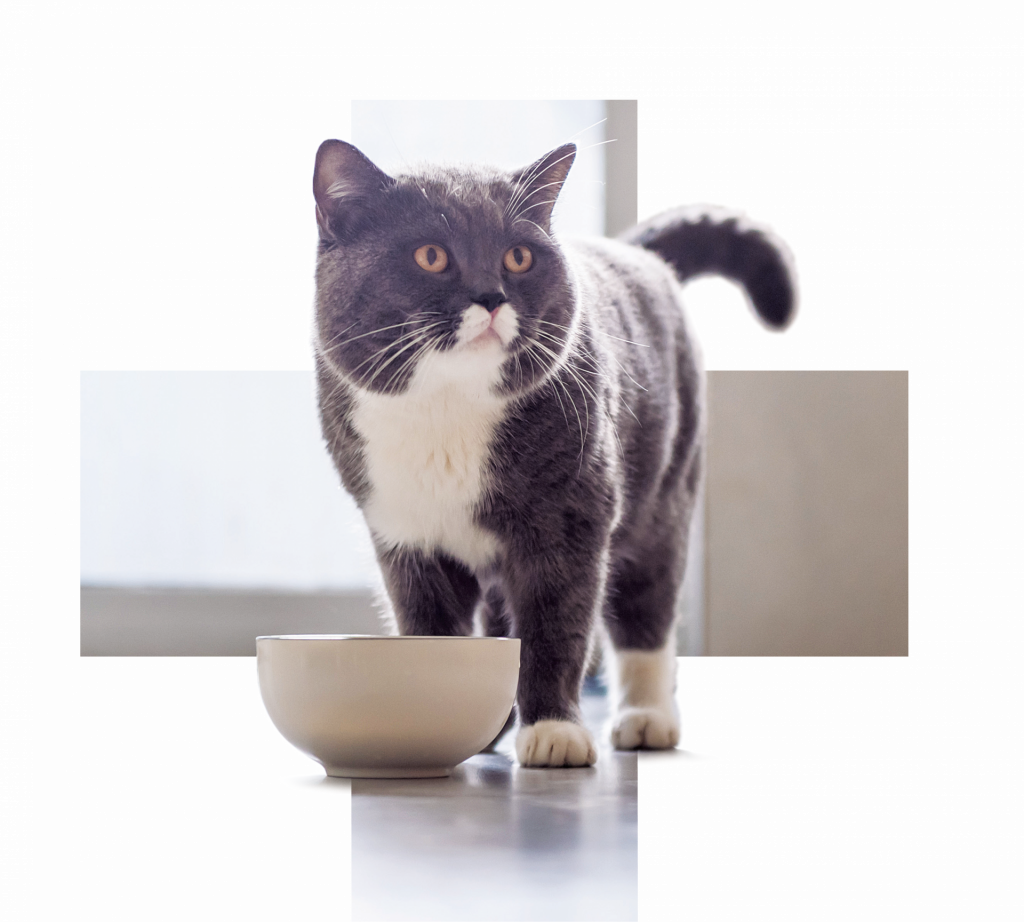 Trichobezoars (hairballs)
Trichobezoars (hairballs)
Cats are very clean and are meticulous about personal hygiene. They clean themselves regularly by licking their entire body. The surface of cats’ tongues is rough, which they
use to remove dead hairs from the hair follicles. During this ritual, however, they swallow quite a bit of hair. These hairs make their way through the digestive tract and form
trichobezoars (hairballs). Under normal circumstances, cats can eject hairballs without difficulty, but a problem arises when the hairballs get into the intestines and block them.
If the situation is serious and the cat must undergo surgery, it is advisable to put the cat on a gastrointestinal diet during the recovery period to help recovery and to provide all the necessary nutrients.
What are the most common symptoms of digestive tract disorders?
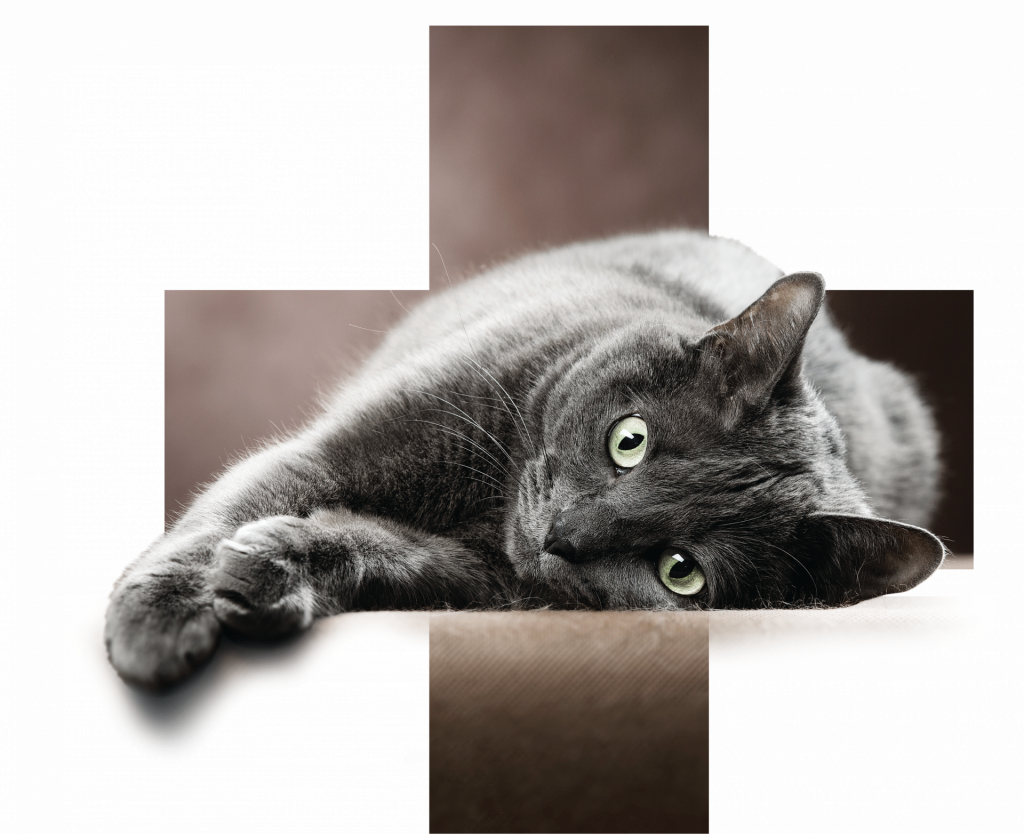 Vomiting
Vomiting- Diarrhea or constipation
- Lack of appetite
- Weight loss
- Abdominal pain
- Aversion to movement
- Difficulties with elimination
What are the advantages of a veterinary gastrointestinal diet over conventional food?
- Highly digestible ingredients
It only contains ingredients that are gentle on the digestive tract and as easy to digest as possible. It does not require as high secretion of digestive juices and enzymes for digestion as regular food. The result is a high level of absorption of nutrients in the small intestine. The digestibility of nutrients in the gastrointestinal diet is approx. 90%. Raw materials with high digestibility include salmon protein, rice, eggs, and chicken fat.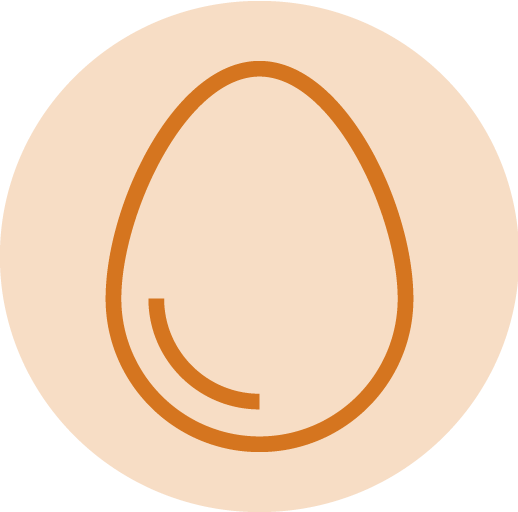
Eggs represent gold standard for the biologic value of proteins as they have the best amino acid composition and digestibility of any protein source available.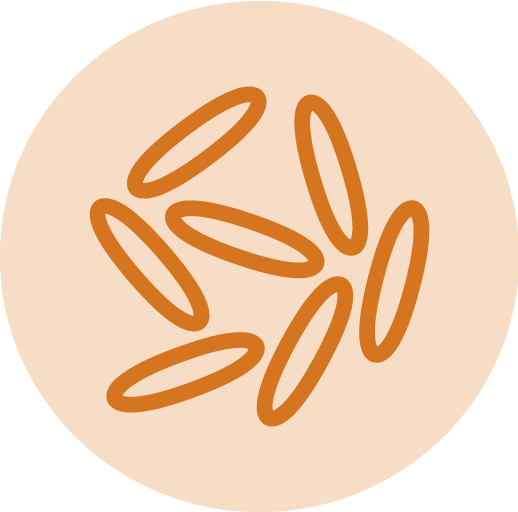
Rice is an ideal source of carbohydrates for digestive problems - it is gluten-free and rich in mucousforming substances, which are important for the treatment of intestinal diseases. - Optimum concentration of fat
With intestinal problems, digestion is adversely affected by fats. Too much of fat would put a strain on the intestines and pancreas (increased production of digestive enzymes would be needed). - Hypoallergenic composition
The recipe is based on the “limited ingredient” principle, using well-defined ingredients and reducing the number of ingredient types, which reduces the incidence of potential allergens. - Functional additives
To support the digestive system, other supporting substances such as vitamins, minerals, and fulvic acids
are included in the gastrointestinal diet. - Prebiotics and probiotics
Prebiotics and probiotics in a gastrointestinal diet support the proper functioning of the intestinal microbiome and therefore the immune processes in the intestines.
Prebiotics are food for so-called “friendly bacteria”
This is fiber – specifically fiber from apples, yeast, and fructooligosaccharides + mannanoligo- saccharides (FOS/MOS).
Probiotics are themselves “friendly bacteria”.“ Lactobacillus group (such as Lactobacillus acidophilus)
is the most used. These bacteria are part of the natural intestinal microflora and activate local immunity in the intestines.
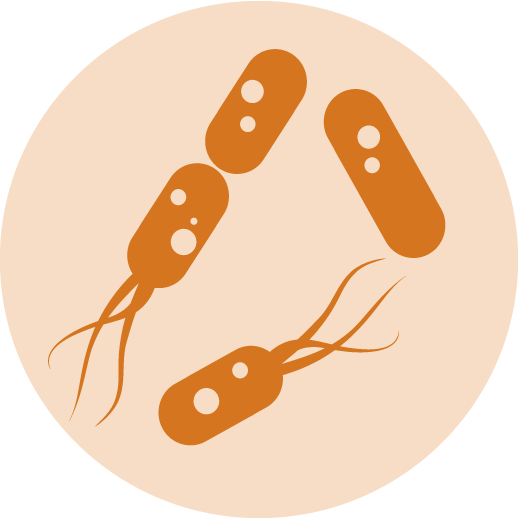 Microbiome - is the total mass of microorganisms in the body (the so-called “good” or “friendly” bacteria). The microbiome contains many times more cells than the number of cells of the host organism. The smallest disruption of the microbiome can affect the overall functioning of the body. Therefore, it supports metabolism by breaking down components
Microbiome - is the total mass of microorganisms in the body (the so-called “good” or “friendly” bacteria). The microbiome contains many times more cells than the number of cells of the host organism. The smallest disruption of the microbiome can affect the overall functioning of the body. Therefore, it supports metabolism by breaking down components
of food such as indigestible polysaccharides (known as “fiber”) and transforms food components into energy-rich organic acids. This process leads to a reduction in pH in the intestinal environment, which helps to protect against pathogens. “Friendly” bacteria produce proteins and peptides with antimicrobial properties and compete for available nutrients with pathogenic bacteria, thereby protecting the host. There is also an interaction with the immune system.
How can I tell if the diet is working?
The most reliable and clearest indicator of whether the digestive system is working properly in a home environment is observing the stool.
If digestion is working properly, stools have an optimum consistency without foreign bodies. If diarrhea/constipation is observed, a problem has arisen somewhere that needs to be diagnosed.
Chronic (long-lasting) diarrhea may be dangerous, as the body loses not only water, but also important nutrients. Digested food moves through the intestines so quickly that the necessary nutrients are unable to permeate the cells, and the body therefore cannot utilize them. The body must then take nutrients from its stores, and the cat begins to lose weight. As a result, reduced energy levels can lead to apathy.
One of the first indicators that a diet is working is improvement in stool consistency and thereby also in the cat‘s condition.
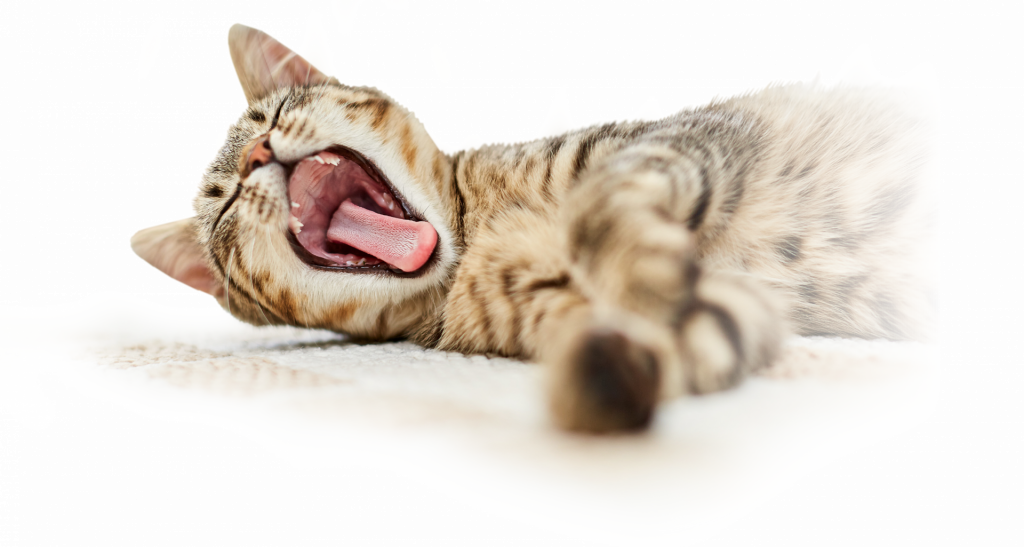
Beware !!! In cats, it is recommended to start the diet at home in a calm environment after a period of hospitalization. Cats are extremely sensitive to stress and can directly associate diet with the stressful environment of the veterinary clinic. Therefore, if the diet is planned to be used for a longer period, it is recommended to start serving it at home.
What does Calibra offer?
To address digestive problems in cats, Calibra has developed the Gastrointestinal & Pancreas veterinary diet with a balanced formula provided by the Digestion Support System:
- Selected source of highly digestible proteins – dehydrated eggs and hydrolyzed salmon
- Increased sodium and potassium content
- INTESTINAL MICROBIOME COMPLEX – special combination of substances to maintain the physiological functions of the digestive system:
Prebiotics (modified yeast culture, fructo-oligosaccharides (FOS), beta-glucans, mannan-oligosaccharides (MOS))
Paraprobiotics (Lactobacillus acidophilus – inactivated)
Supported by fulvic acids
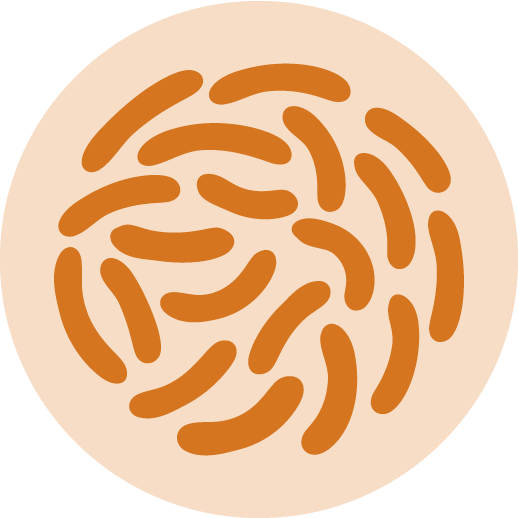 Lactobacillus acidophilus is a probiotic live bacteria - found in natural intestinal microflora. Calibra uses inactivated bacterial cultures in VD Gastrointestinal & Pancreas with
Lactobacillus acidophilus is a probiotic live bacteria - found in natural intestinal microflora. Calibra uses inactivated bacterial cultures in VD Gastrointestinal & Pancreas with
paraprobiotic effects. This Lactobacillus acidophilus (inactivated) contains the same
components as live Lactobacillus bacteria commonly found in the intestines and displays
similar effects. The advantage of this inactive form of Lactobacillus is that, unlike the live
form, it is not necessary to protect its viability, whether during the food production process
or in the aggressive environment
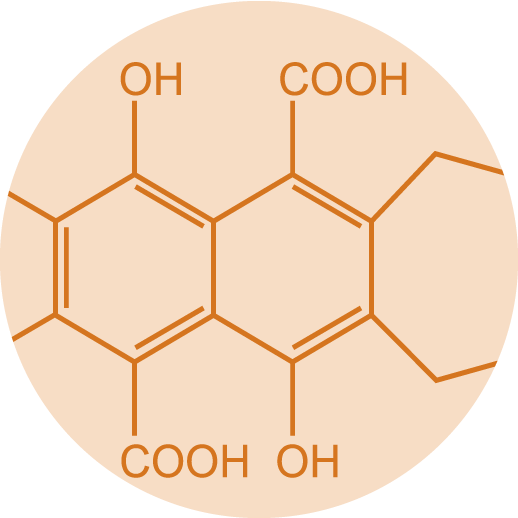 Fulvic acids - are a group of organic acids that originate in the organic components of soil (humus). By adding them to the feed, Calibra returns to a natural diet in VD Gastrointestinal &
Fulvic acids - are a group of organic acids that originate in the organic components of soil (humus). By adding them to the feed, Calibra returns to a natural diet in VD Gastrointestinal &
Pancreas. Their primary function is to help remove toxins and heavy metals from the body, which the body takes in from the environment or through food. They are also known for their positive effect on the absorption of nutrients and for their anti-inflammatory properties.
[#product-1391]Calibra VD Gastrointestinal & Pancreas is recommended for:
- Gastrointestinal issues
- Diseases of the pancreas
- Long-term use to support sensitive digestion
Gastrointestinal & Pancreas veterinary diet helps:
- with acute and chronic illnesses of the digestive tract
- with episodes of diarrhea
- support the treatment of feline triaditis (inflammatory disorder of the intestines, pancreas and liver)
- [#product-439]prevent digestive problems in cats with sensitive digestion
...and finally…
The Calibra gastrointestinal diet has been specially developed by veterinarians based on the latest medical studies. Its high palatability and digestibility are easy on the digestive tract and stimulate normal functioning of the intestines. This means that even small amounts (compared with normal meal sizes) can provide the daily required nutrients. Today, veterinary diets lie somewhere in between medicine and regular food, and help support medical treatment in the most natural way.
Calibra VD Gastrointestinal & Pancreas is gentle toward the gastrointestinal tract and you can feed it to your cat on long-term basis, even for a life time in case of sensitive cats.
